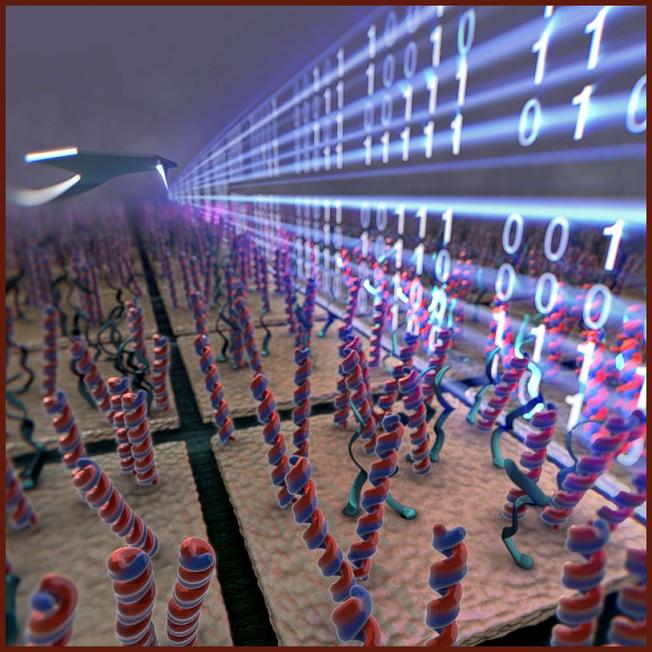Home > Press > Computer-rendered flexibility map of Bacteriorhodposin
 |
| Nanomechanical Sensing Group, Rowland Institute at Harvard |
Abstract:
Investigators study the properties of proteins, akin to tiny molecular machines with complex moving parts, by analyzing their crystal structures.
Computer-rendered flexibility map of Bacteriorhodposin
Cambridge, MA | Posted on January 12th, 2010Given the extremely small physical dimensions involved, capturing the "frozen images of their atoms" is extremely difficult. Moreover, these molecular machines work fast---moving to and fro in mere microseconds. To take a snapshot, a team at the Rowland Institute at Harvard led by Ozgur Sahin, Primary Investigator and Junior Fellow, and Sudhir Husale, postdoctoral fellow, developed a new technology called microsecond force spectroscopy. The method offers dramatically improved spatial and temporal resolutions in mechanical measurements and provides researchers with a robust platform to investigate a wide range of proteins involved in diseases and other biological processes. Pictured is a computer-rendered flexibility map of Bacteriorhodposin, a membrane protein that converts light into electrical energy. The findings were published online in Nature on December 13. Sahin and Husale's collaborators included Henrik H. J. Persson, a Research Associate at the Stanford Genome Technology Center, and Mingdong Dong, a postdoctoral fellow at Rowland.
####
About Harvard University
Harvard University (incorporated as The President and Fellows of Harvard College) is a private university located in Cambridge, Massachusetts and a member of the Ivy League. Founded in 1636 by the colonial Massachusetts legislature, Harvard is the oldest institution of higher learning in the United States and currently comprises ten separate academic units. It is also the first and oldest corporation in the United States.
From Wikipedia, the free encyclopedia
For more information, please click here
Copyright © Harvard University
If you have a comment, please Contact us.Issuers of news releases, not 7th Wave, Inc. or Nanotechnology Now, are solely responsible for the accuracy of the content.
| Related News Press |
News and information
![]() Researchers develop molecular qubits that communicate at telecom frequencies October 3rd, 2025
Researchers develop molecular qubits that communicate at telecom frequencies October 3rd, 2025
![]() Next-generation quantum communication October 3rd, 2025
Next-generation quantum communication October 3rd, 2025
![]() "Nanoreactor" cage uses visible light for catalytic and ultra-selective cross-cycloadditions October 3rd, 2025
"Nanoreactor" cage uses visible light for catalytic and ultra-selective cross-cycloadditions October 3rd, 2025
Nanomedicine
![]() New molecular technology targets tumors and simultaneously silences two ‘undruggable’ cancer genes August 8th, 2025
New molecular technology targets tumors and simultaneously silences two ‘undruggable’ cancer genes August 8th, 2025
![]() New imaging approach transforms study of bacterial biofilms August 8th, 2025
New imaging approach transforms study of bacterial biofilms August 8th, 2025
![]() Cambridge chemists discover simple way to build bigger molecules – one carbon at a time June 6th, 2025
Cambridge chemists discover simple way to build bigger molecules – one carbon at a time June 6th, 2025
![]() Electrifying results shed light on graphene foam as a potential material for lab grown cartilage June 6th, 2025
Electrifying results shed light on graphene foam as a potential material for lab grown cartilage June 6th, 2025
Tools
![]() Japan launches fully domestically produced quantum computer: Expo visitors to experience quantum computing firsthand August 8th, 2025
Japan launches fully domestically produced quantum computer: Expo visitors to experience quantum computing firsthand August 8th, 2025
![]() Rice researchers harness gravity to create low-cost device for rapid cell analysis February 28th, 2025
Rice researchers harness gravity to create low-cost device for rapid cell analysis February 28th, 2025
|
|
||
|
|
||
| The latest news from around the world, FREE | ||
|
|
||
|
|
||
| Premium Products | ||
|
|
||
|
Only the news you want to read!
Learn More |
||
|
|
||
|
Full-service, expert consulting
Learn More |
||
|
|
||








